
Arkanoid is a 1986 block breaker arcade game developed and published by Taito. In North America, it was published by Romstar. Controlling a paddle-like craft known as the Vaus, the player is tasked with clearing a formation of colorful blocks by deflecting a ball towards it without letting the ball leave the bottom edge of the playfield. Some blocks contain power-ups that have various effects, such as increasing the length of the Vaus, creating several additional balls, or equipping the Vaus with cannons. Other blocks may be indestructible or require multiple hits to break.

Super Mario 64 DS is a 2004 platform game developed and published by Nintendo as a launch game for the Nintendo DS. Super Mario 64 DS is a remake of the 1996 Nintendo 64 game Super Mario 64, with new graphics, characters, collectibles, a multiplayer mode, and several extra minigames. As with the original, the plot centers on rescuing Princess Peach from Bowser. Unlike the original, Yoshi is the first playable character, with Mario, Luigi, and Wario being unlockable characters in early phases of the game.
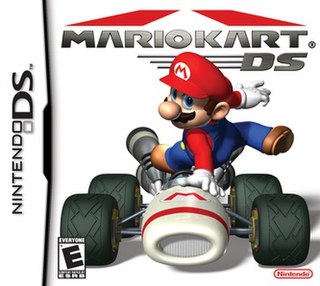
Mario Kart DS is a 2005 kart racing game developed and published by Nintendo for the Nintendo DS handheld game console. It was released in November 2005 in North America, Europe, and Australia, and on December 8, 2005, in Japan. The game was re-released for the Wii U's Virtual Console in North America and PAL regions in April 2015 and in Japan in May 2016. The game is the fifth main entry in the Mario Kart series, and the first to be playable via the Nintendo Wi-Fi Connection online service. Like other games in the series, Mario Kart DS features characters from the Mario series and pits them against each other as they race in karts on tracks based on locations in the Mario series.
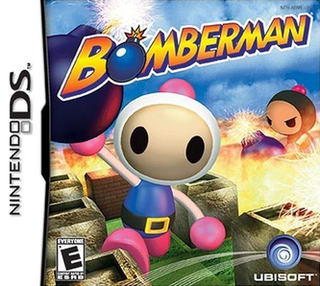
Bomberman is a 2005 video game developed by Racjin for the Nintendo DS. It was released by Hudson Soft in Japan on May 26, 2005, and published worldwide by Ubisoft. The game is notable for its chibi art style, previously seen in the Bomberman Land series.

Mr. Driller Drill Spirits is a 2004 puzzle video game developed and published by Namco for the Nintendo DS. Controlling one of six characters, the player must make it to the bottom of each stage by destroying, colored formations of blocks while preventing their oxygen meter from depleting. Multiple different gamemodes are present, including a single-player campaign, a time-attack mode, and a competitive multiplayer mode. It is the sixth entry in the Mr. Driller series.

Nanostray is a vertically scrolling shooter for the Nintendo DS. The user takes control of a futuristic spacecraft against a horde of enemies. A sequel, Nanostray 2, was released in 2008.
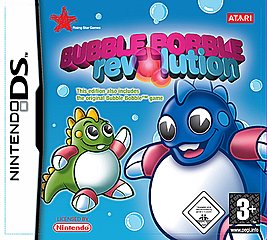
Bubble Bobble Revolution is a 2D platform game for the Nintendo DS. Developed by Dreams, it was released in Japan on 24 November 2005 by Taito as Bubble Bobble DS, in Europe on 2 December by Rising Star Games (distribution handled by and in North America on 3 October 2006 by Codemasters.

Elebits, known in PAL territories as Eledees (LEDs), is an action/first-person shooter game developed and published by Konami for the Wii. It was released as a launch title on December 2, 2006 in Japan, then December 12, 2006 in North America, May 4, 2007 in Europe, and May 17, 2007 in Australia.

Pokémon Battle Revolution is a turn-based strategy video game in the Pokémon series developed by Genius Sonority and published by The Pokémon Company and Nintendo. It was released for the Wii on December 14, 2006, in Japan; on June 25, 2007, in North America; on November 22, 2007, in Australia, and on December 7, 2007, in Europe. Along with being the first Wii incarnation of the Pokémon video game franchise, it is also the first Wii game to use the Nintendo Wi-Fi Connection in North America and Japan and the second Wii game to wirelessly interact with the Nintendo DS handheld.

bit Generations is a video game franchise for the Game Boy Advance, published by Nintendo. It was first announced under the name Digitylish at the Electronic Entertainment Expo (E3) in 2005. Each of the games in the series feature simple controls, gameplay and graphics. All the games were developed by Skip Ltd., except for Digidrive, which was developed by Q-Games.
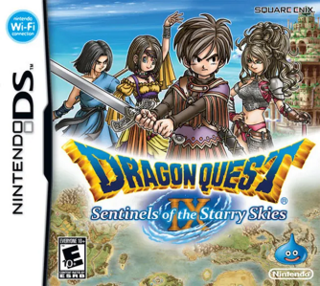
Dragon Quest IX: Sentinels of the Starry Skies is a role-playing video game co-developed by Level-5 and Square Enix for the Nintendo DS. Published by Square Enix in Japan in 2009, and by Nintendo overseas in 2010, it is the ninth mainline entry in the Dragon Quest series. The storyline follows the protagonist, a member of the angelic Celestrian race, after a disaster in their home scatters magical fruits across the mortal realm. While carrying over traditional gameplay from the rest of the series with turn-based battles, the game is the first Dragon Quest entry to feature a customizable player character, and the first to include a multiplayer mode, with the option of trading treasure maps and loaning player characters through Nintendo Wi-Fi. Online functions ended in 2014 when it ceased operations.

Mario Party DS is a 2007 party video game developed by Hudson Soft and published by Nintendo for the Nintendo DS. It is the second handheld game in the Mario Party series, as well as the last game in the series to be developed by Hudson Soft, as all subsequent titles have been developed by Nintendo Cube. The game was re-released on the Virtual Console for the Wii U in 2016.

Super Smash Bros. Brawl is a 2008 crossover fighting game developed by Sora Ltd. and Game Arts and published by Nintendo for the Wii. The third installment in the Super Smash Bros. series, it was announced at a pre-E3 2005 press conference by Nintendo president Satoru Iwata. Masahiro Sakurai, director of the previous two games in the series, assumed the role of director at Iwata's request. Game development began in October 2005 with a creative team that included members from several Nintendo and third-party development teams. After delays due to development problems, the game was released worldwide in 2008.

Nervous BrickdownJPN is a Breakout clone video game developed by the French team Arkedo Studio and published by Eidos Interactive for Nintendo DS in 2007.

Space Invaders Extreme is a re-vamped incarnation of the classic arcade game Space Invaders. The DS and PSP versions were released to mark the 30th anniversary of Space Invaders which saw its original arcade release in 1978. An HD version of the game has been remastered by Backbone Entertainment for Xbox Live Arcade with new four-player multiplayer modes and visualizer backgrounds by Jeff Minter, it was released on 6 May 2009 as a wrap-up to the 30th anniversary. The game is played at a fast pace with an electronic soundtrack and sound effects.

Arkanoid DS is a breakout video game developed by Taito and published by Square Enix for the Nintendo DS. It was released on December 6, 2007.
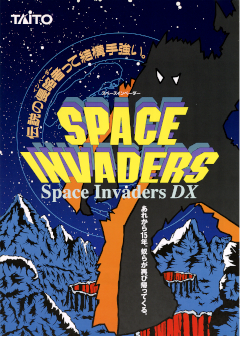
Space Invaders DX is a 1993 fixed shooter arcade game developed and published in Japan by Taito. It has been re-released for several consoles since, including the Super Nintendo Entertainment System, PC Engine Super CD, and Sega Saturn — several of these conversions use the name Space Invaders: The Original Game. The player assumes control of a laser base that must fend off waves of incoming enemies, who march down in formation towards the bottom of the screen. It is the fifth entry in the long-running Space Invaders series. DX contains four variations of the original Space Invaders, in addition to a multiplayer mode and a "Parody Mode" that replaces the characters with those from other Taito franchises. Home ports of DX received mixed reviews for their high price point and general lack of content.

Space Bust-A-Move is a puzzle video game developed by Lancarse and published by Taito in Japan, and Square Enix worldwide for the Nintendo DS. It was first released in Japan under the title Space Puzzle Bobble on December 18, 2008. It was later released in North America under the title Space Bust-A-Move on July 28, 2009, and in Europe under the title Puzzle Bobble Galaxy on August 28, 2009. As with Arkanoid DS, Space Invaders Extreme and Space Invaders Extreme 2, the game is compatible with Taito's paddle controller.
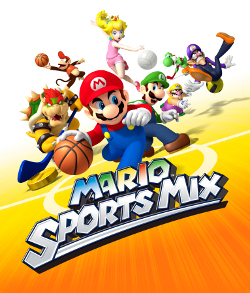
Mario Sports Mix is a 2010 sports video game developed by Square Enix and published by Nintendo for the Wii. It features volleyball, ice hockey, dodgeball, and basketball. The game features mostly characters and locations from the Mario series with a few guest appearances by characters from Square Enix's Final Fantasy and Dragon Quest series of games. Players can also opt to play as one of their Mii characters.

Dungeon Hunter: Alliance is a hack and slash action role-playing video game developed and published by Gameloft in 2011. The game is a remake of the 2009 iPhone game Dungeon Hunter, with the addition of a multiplayer mode and support for the PlayStation Move controller.





















